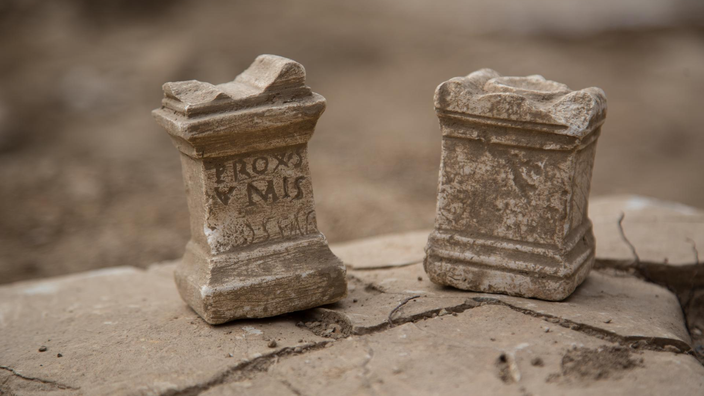In the 1st century AD. AD, the city of Nemausus was enclosed in an honorary wall of seven kilometers with which Augustus had endowed. Of this proud rampart, only the Magne tower remains today, a powerful vestige of an ancient Roman watchtower located to the north-west of the city. If the patrols have deserted this old stone watchtower for many centuries, a careful observation of its summit would be enough to reveal a curious animation on the hillside. Since January, a team of archaeologists has been busy stripping, digging, excavating, sampling and documenting the soil in Nîmes located upstream of a real estate project. Little studied in recent years, this sector of the city has not only revealed to Inrap researchers a rich overview of the Roman city of Nemausus,but also a whole section of the Celtic volcano city (named after the Gallic tribe which once occupied Languedoc) which had preceded it.
Read also: Mansions of the Roman elite, two rich domus discovered near the Maison Carrée in Nîmes
Because it is more recent, it is first of all the layer of the Roman agglomeration which appeared in the eyes of archaeologists. Digging on the edge of rue Rouget de Lisle, a section of an urban residential area dating from the Augustan period (27 BC to 14 AD) has been unearthed. Articulated on either side of a very well preserved paved road, two small
domus
were unearthed with the greatest care. With a plan quite similar to the Roman models, they were provided with interior courtyards, gardens, and painted walls whose colors - typical of the second Pompeian style (between 50 and 30 BC) - are still today. visible on the base of a wall.
"We were able to identify reception rooms, dining rooms, but also two complete kitchens with the brick fire table and the clay bread oven"
, declared on France 3 the scientific director of the excavation Ghislain Vincent.
"The scope of the work required a significant contribution of material, provided by craftsmen working in nearby quarries"
, also specified Inrap in a press release.
Illustration of the persistence of traditional know-how, the earthen masonry of these houses from the time of Augustus had been built according to Celtic techniques, more than a century after the beginning of the Roman administration of the region.
1/4 - Aerial view of the site with the Tour Magne in the background.
Pascal Bois / Inrap
2/4 - The Roman paved road used between the 1st century BC and the 2nd century.
Charlotte Gleize / Inrap
3/4 - View of the painted plaster wall decorated in the second Pompeian style.
Pascal Bois / Inrap
4/4 - The miniature altars facing a section of painted wall.
Pascal Bois / Inrap
The persistence of pre-Roman models in Nemausus was not limited to the building sector alone. In addition to storage spaces (wine and oil), a space dedicated to religious activities was also identified, with the presence of two miniature altars, one of which mentioned the Proxumes, regional Gallic deities, associated among the Volques with the cult of Juno. As with the construction methods, these discoveries
“bear witness to the durability of Celtic traditions”
in an urban island in the Roman style, among relatively wealthy populations and at the height of the city of Nemausus. This urban section of the Roman city evolved during the 1st and 2nd century AD, its residential function giving way to a potter's activity.
Read also: Burgundy: new traces of an ancient and vast Gallic city
The Gallic city under the Roman city
By digging a little deeper under the Roman layer, portions of the Gallic Nemausus itself were in turn unearthed by Nîmes researchers. The discovery of this Celtic level of occupation revealed structures typical of protohistoric town planning.
“We find a Roman quarter which itself settles on an old Gallic quarter!
said Jean-Yves Breuil, technical and scientific director at Inrap, for France 3.
We have a historical depth in that place, which we cannot find elsewhere ”
. Several homes have been discovered for what was to be a domestic ensemble; largely enough to confirm in the eyes of archaeologists the extension to the hill of the city of Volques.
The excavation campaign in Nîmes, along rue Rouget de Lisle, should come to an end next month. For Nîmes archaeologists, the site is already eloquently highlighting the succession of different historical periods in ancient Nîmes, and the survival of elements of Gallic culture in the midst of a typically Roman environment. The republican and then imperial administration will have returned it to the city, which is granted many privileges at the end of the 1st century BC. AD to the point of becoming one of the Gallic showcases of Romanism and reaching, at its peak, an estimated population of 25,000 inhabitants. This ancient heritage is still proudly claimed in Nîmes where the new archaeological museum inaugurated in 2018 has knowingly been baptized… Museum of Romanity.

